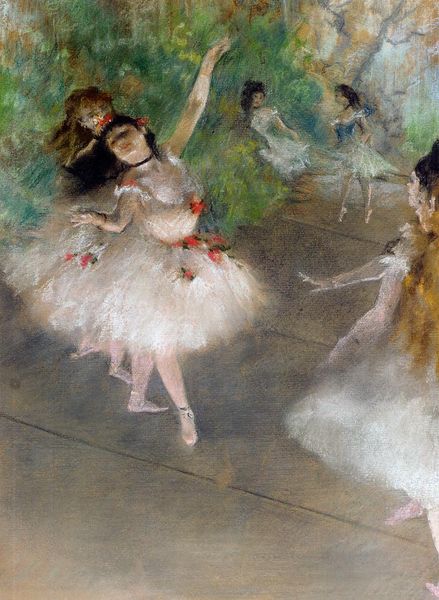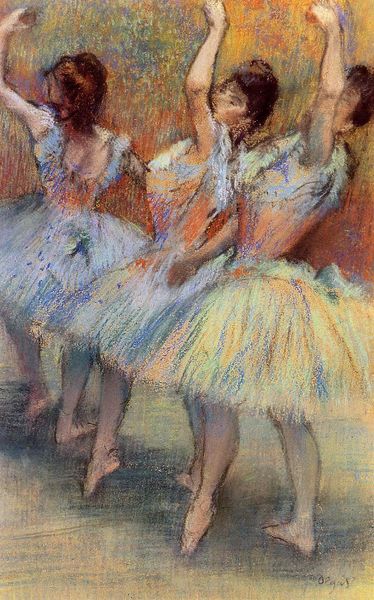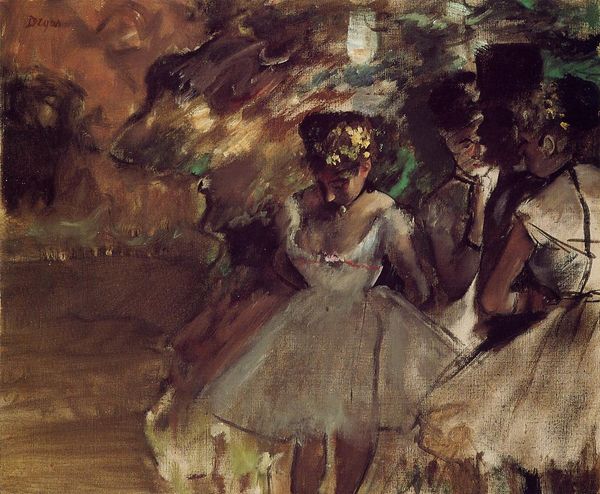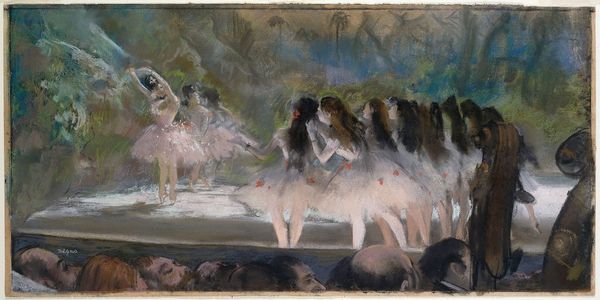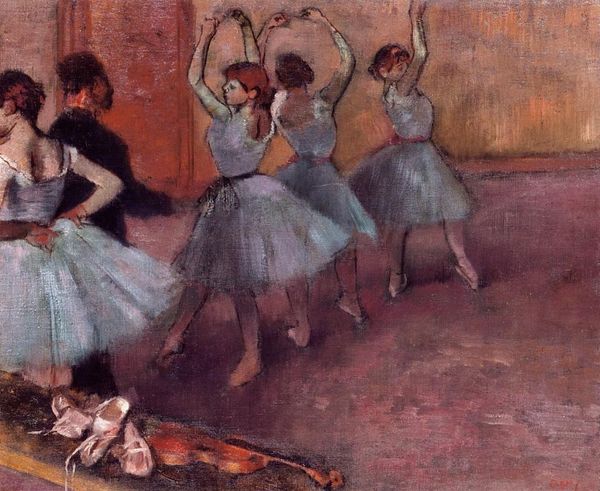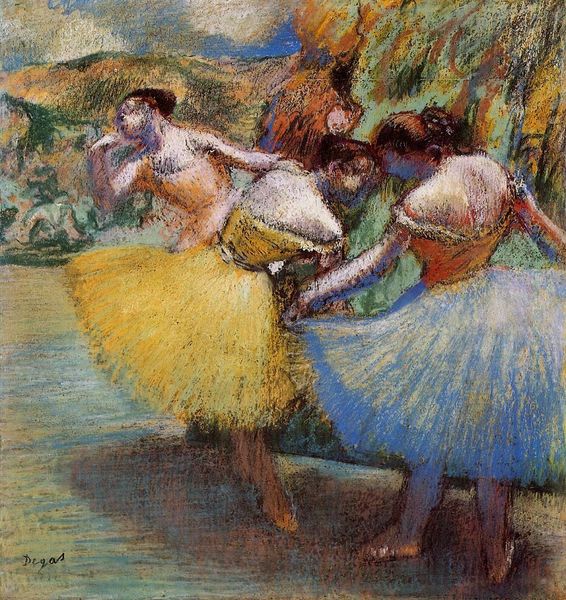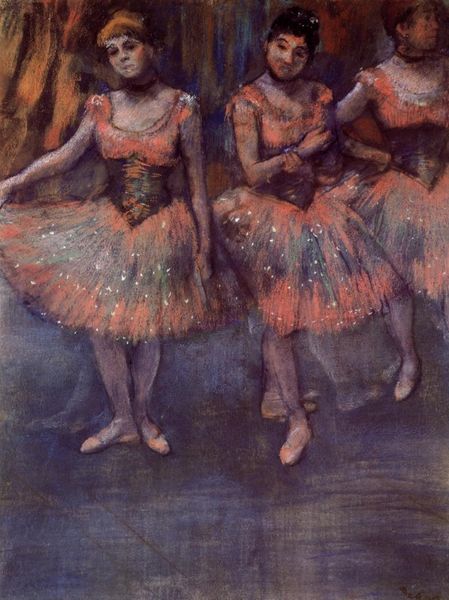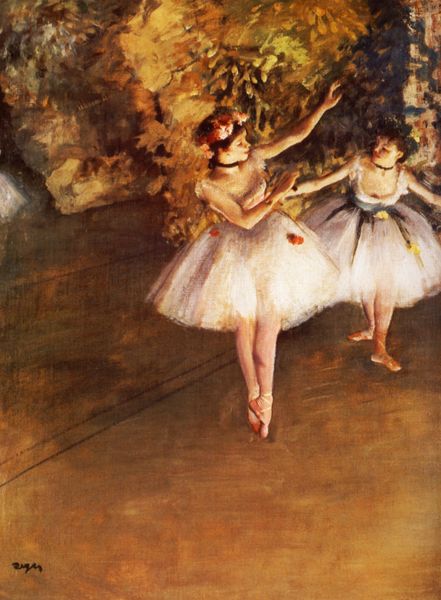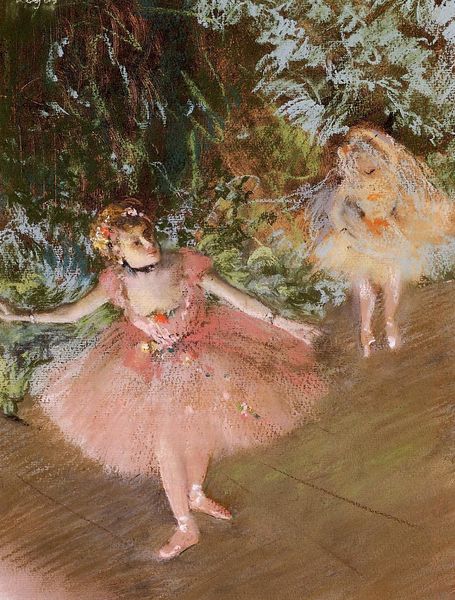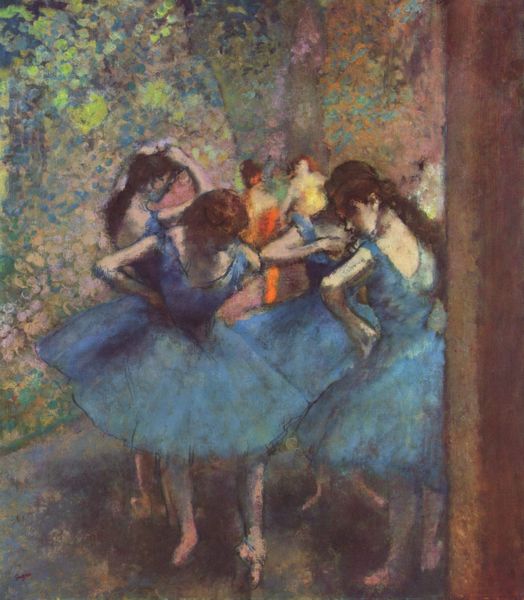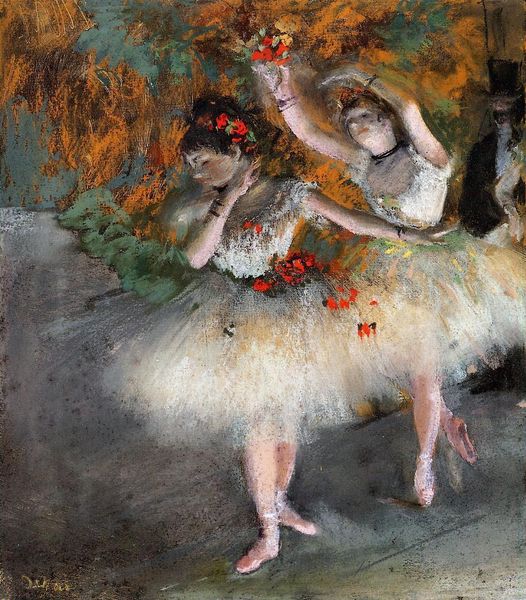
Dance Rehearsal in the Studio of the Opera 1895
0:00
0:00
edgardegas
Norton Simon Museum, Pasadena, CA, US
Copyright: Public domain
Curator: Edgar Degas’ "Dance Rehearsal in the Studio of the Opera," completed in 1895, offers a glimpse into the world of ballet, now housed at the Norton Simon Museum. Editor: It’s immediately striking, this amber haze enveloping everything. It feels less like a poised dance scene and more like a secret, fleeting moment backstage, catching dancers mid-preparation. Curator: Yes, Degas' enduring fascination with the ballet unveils not just its performance, but the arduous labor that lies behind its elegant façade. Consider how the composition employs almost abstracted forms to reveal this story. He repeats motifs such as the ballerinas' circular tutus or their echoed gestures, which emphasize the relentless repetitions that defined ballet. Editor: It is so fascinating that you brought this up, considering the socioeconomic dimensions of ballet and those who perform this “labor of elegance” with their tutus carefully assembled. Looking closely, you realize how important fabric and light are here. Note the different textures – the fluffy tutus, the harsher stage backdrop – and how the artificial lighting washes over them. Curator: I would add to this an interpretation of how he renders the ballerinas almost as nymphs existing in their world apart from the material demands, repeating iconic tropes from classical painting. He depicts them as figures almost fading back into the light of the backdrop to emphasize their removal from conventional daily realities. Their white outfits suggest, in this light, purity and ethereality. Editor: Purity can certainly be a projection or social imperative, and you bring up a good point in the material effects that contribute to a world separate from the socioeconomic conditions that might motivate someone's devotion to such "pure" artistic pursuits. Notice also how Degas’ unusual medium choices – pastel, gouache, watercolor, mixed media. He's building layers, disguising, and revealing the materiality as the topic shifts between symbol and production. Curator: The cultural weight of these symbols endures, doesn’t it? That delicate tension, the dream and the means of creation, lingers with us, even today. Editor: Yes, that back-and-forth pulls our eyes in, again and again, from the stage to the seams and from performance to the processes involved.
Comments
No comments
Be the first to comment and join the conversation on the ultimate creative platform.
